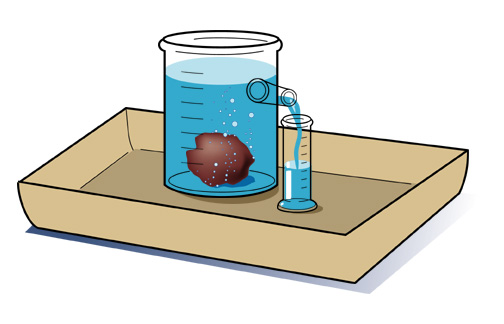How to Calculate the Density of an Object

Density is defined as mass per unit volume (kg/m3 in SI units). It is a physical property of matter which is extensively used in various calculations in the field of mechanics, statics, dynamics, geology, metallurgy and a number of other physical sciences. It is a figure, looking at which a person can identify various forms of elements (metals and non metals), rocks and minerals. It also gives a measure of an object’s buoyancy i.e. its ability to float in water.
Determination of density of any object is not an extensively difficult job, although it does require a few calculations. There are basically three steps through which the density of any material can be calculated. These steps have been discussed in this article.
Instructions
-
1
Determine the Mass of the Object (kg)
As discussed earlier, density of any object is the mass per unit volume. Thus we have to find the mass and the volume separately and then evaluate their ratio. To find the mass of an object, you can simply use a digital scale or a spring balance. If your device gives the weight of the object, it can be divided by g (it is the gravitational acceleration with a constant value of 9.8 m/s2 in SI units) to find the mass of the object. -
2
Determine the Volume of the Object (m3)
There are three ways in which the volume of an object can be determined.
- For a solid with a rectangular shape, volume is the product of length, width and height. Measure the three dimensions and multiply them together.
- If the solid is of a random shape and is also non porous, then Archimedes principle can be used to find the volume. Dip the solid into the jar containing water. The water level will rise, equal to the volume displaced by the solid. Calculate the volume of the water corresponding to the increased level.
- If the object is liquid or powder, put it in a jar and calculate the volume it fills. For liquid, read the lower meniscus while ascertaining the level. -
3
Divide
You can now divide the mass by the volume to attain density.




